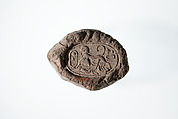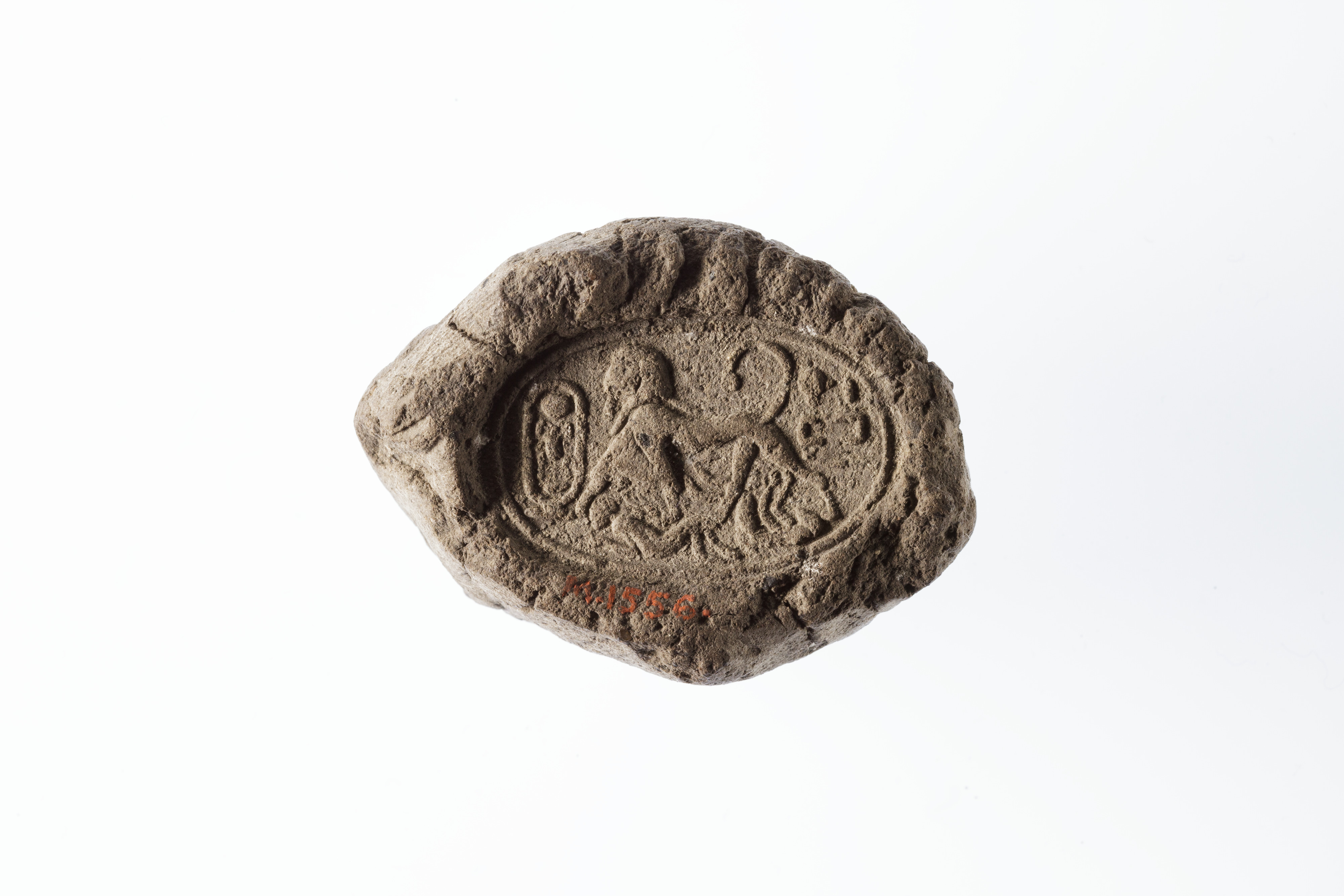Seal impression
New Kingdom, Amarna Period
The Egyptians did not have locks and keys. Instead, they would secure a chest or other container with a piece of knotted cord. A lump of clay was put over the knot and a seal was pressed into the clay. The cord would have to be cut, or the seal broken in order to open the container and remove the contents.
This clay sealing preserves a seal impression about the size of a ring that may have served as an official seal. The impression has the trone name of Tutankhamun, Nebkheperure, in the cartouche at the left. The king is represented as a sphinx trampelling an enemy.
Due to rights restrictions, this image cannot be enlarged, viewed at full screen, or downloaded.
This artwork is meant to be viewed from right to left. Scroll left to view more.



